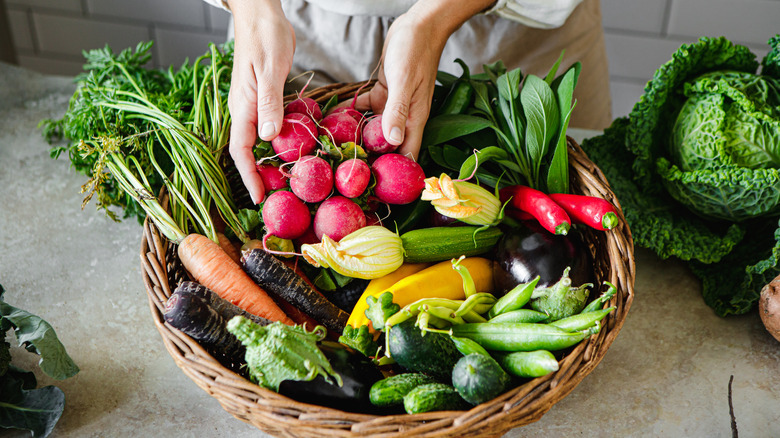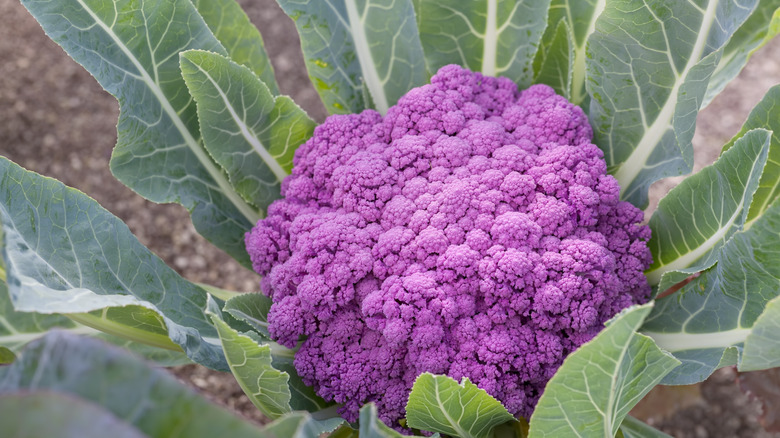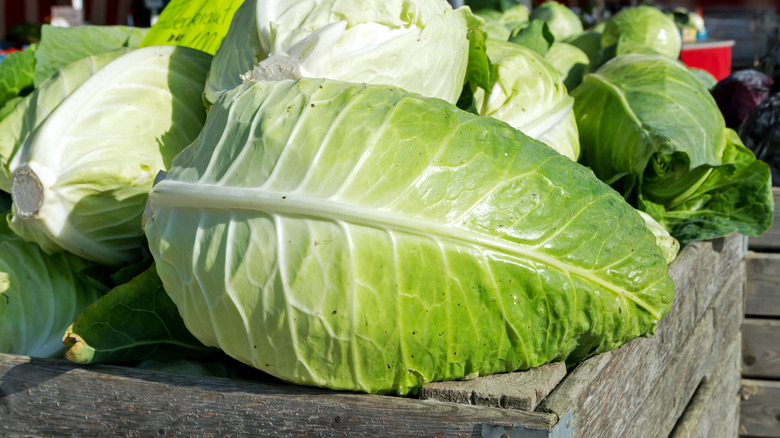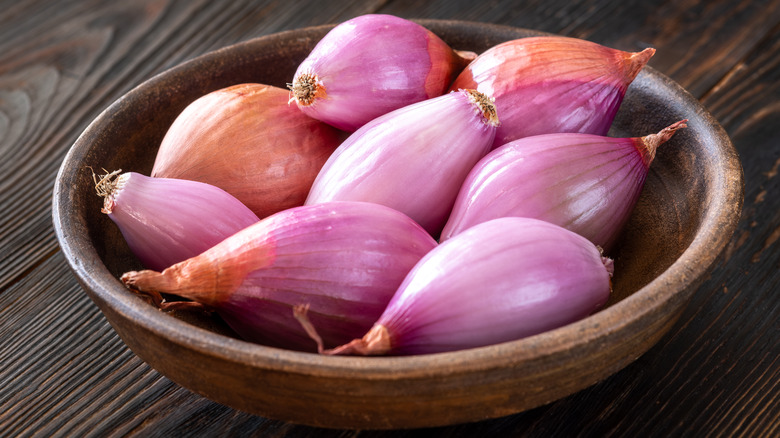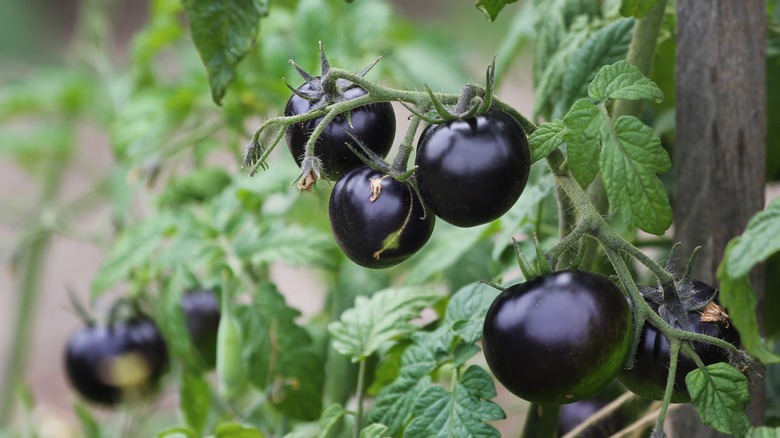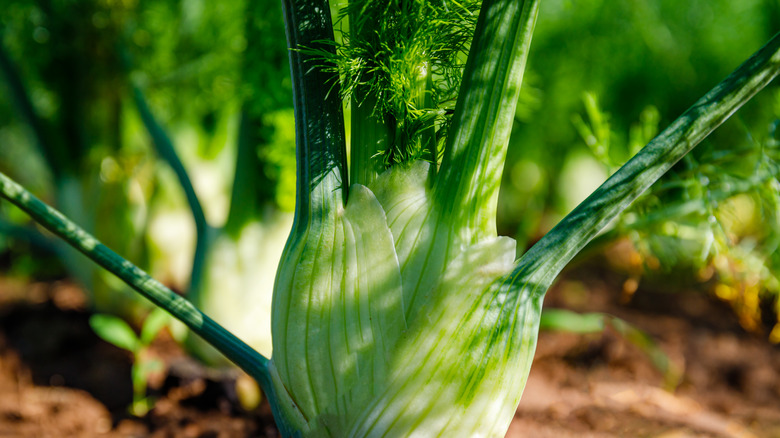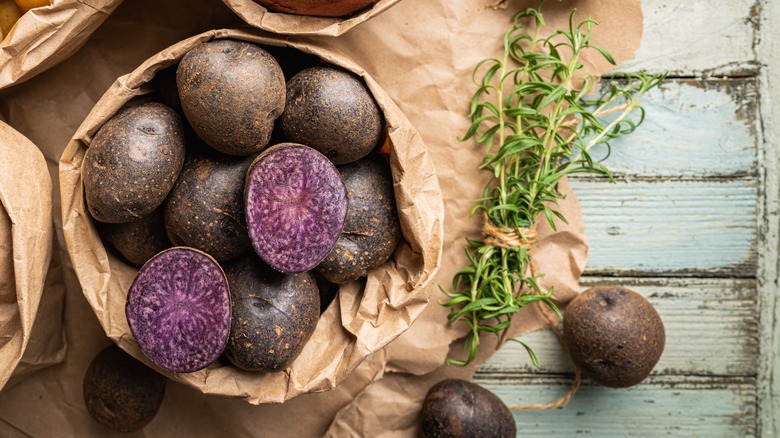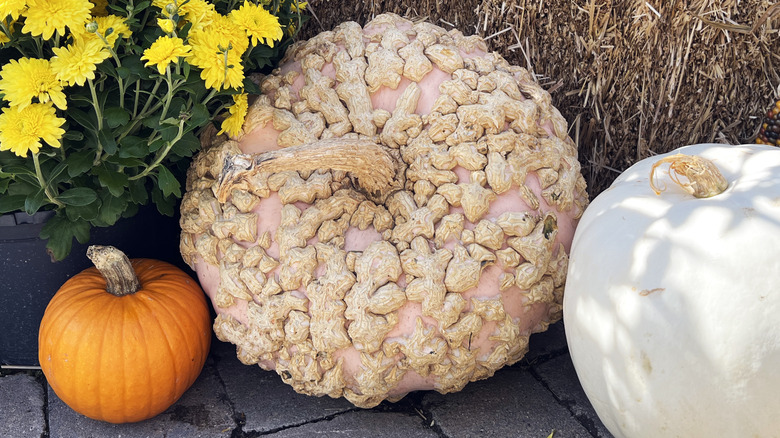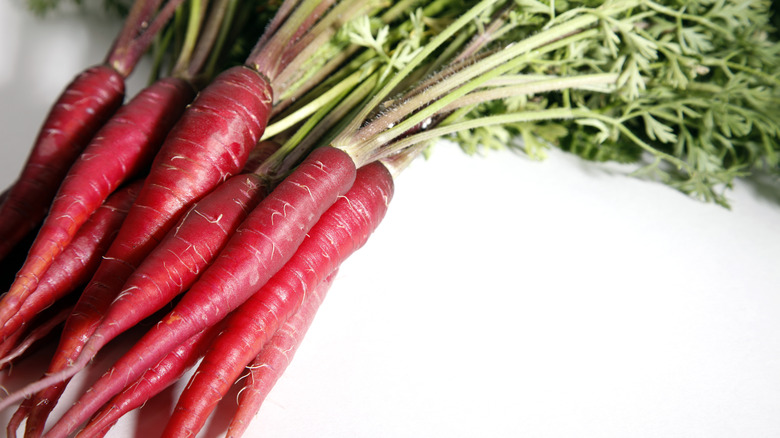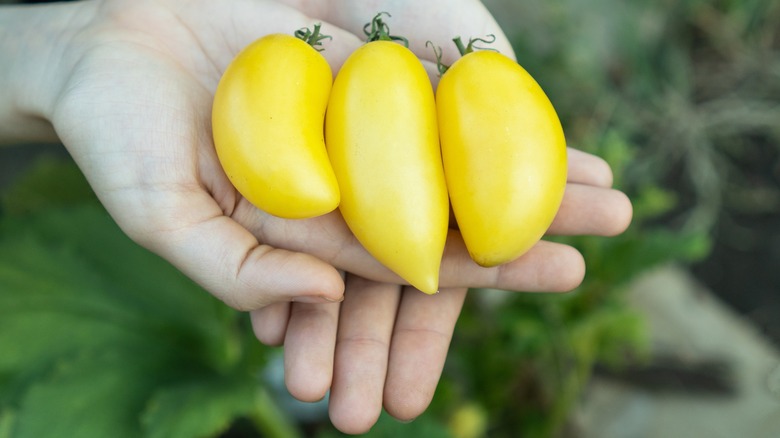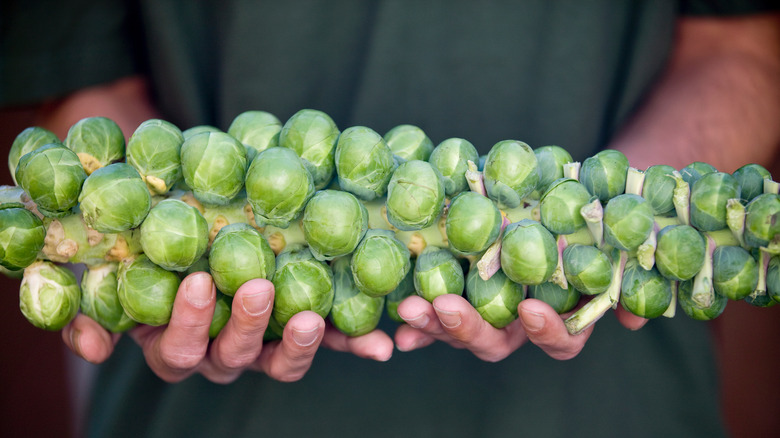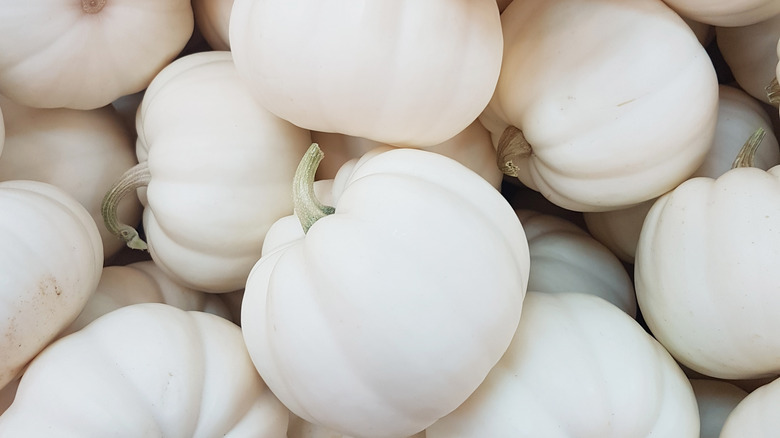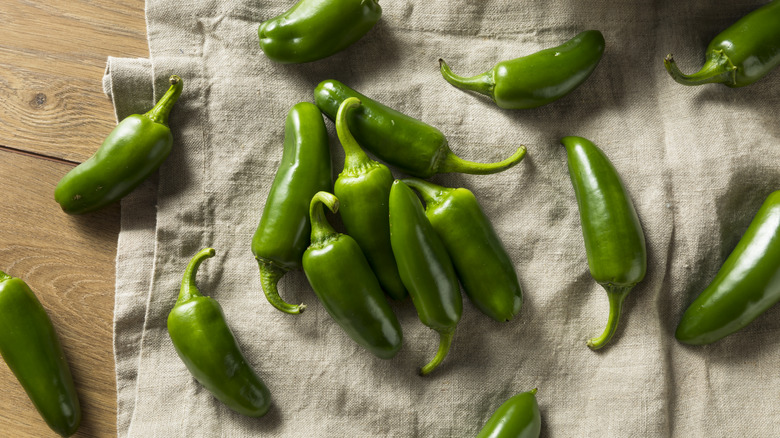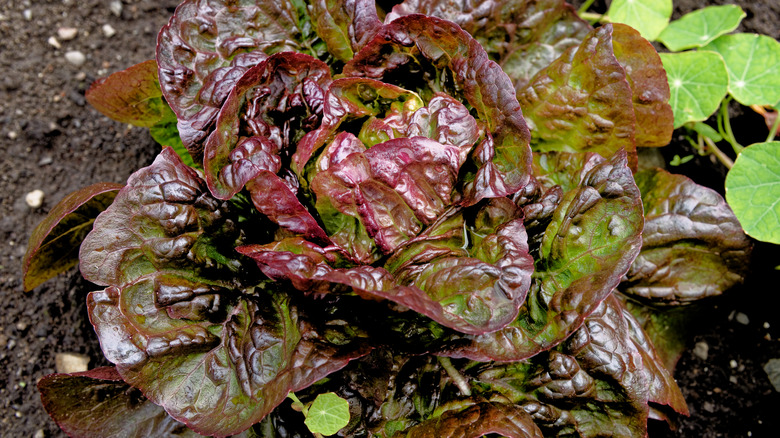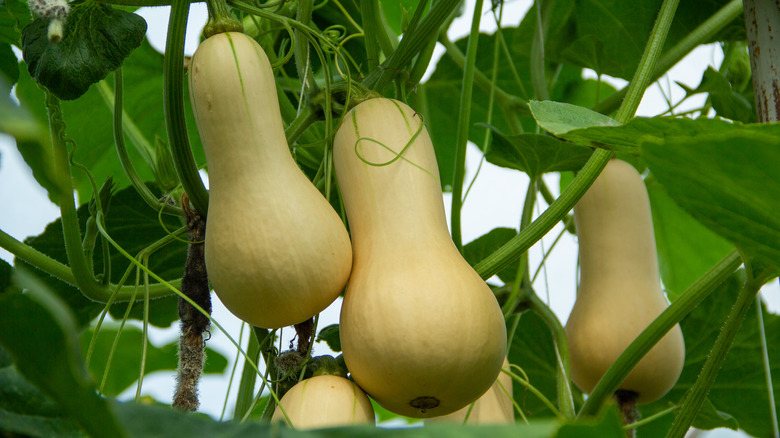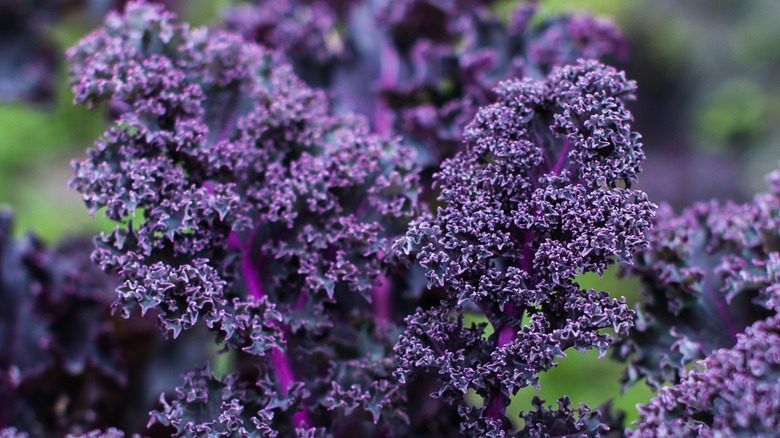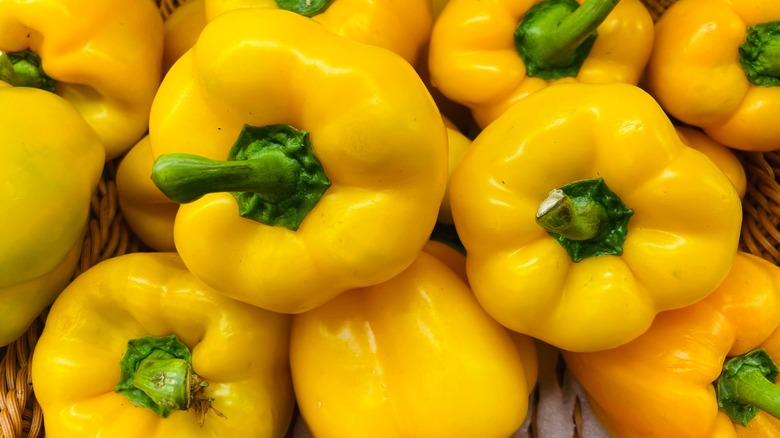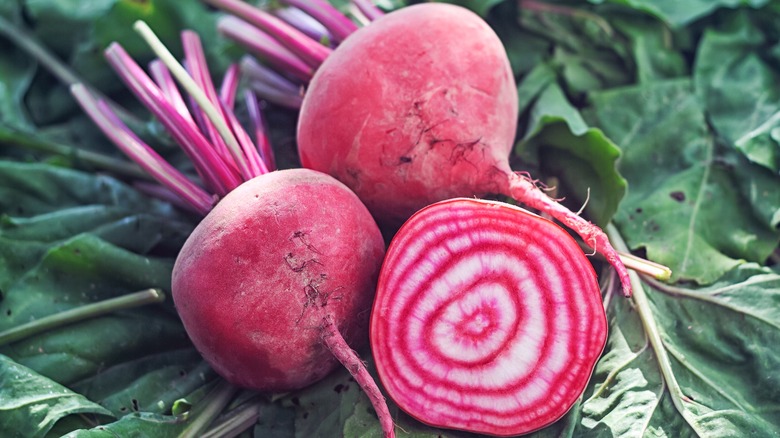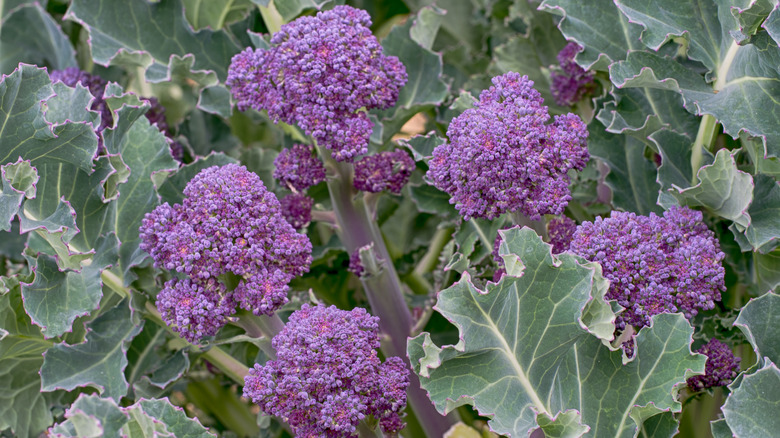17 New Vegetable Varieties Our Professional Gardener Is Excited To Try In Her Garden
Vegetable gardens can be places of comfortable habits, new adventures, or maybe a bit of both. Maybe you're the type of vegetable gardener who likes to grow the same tried-and-true varieties every year. Or perhaps you enjoy trying something new from time to time. New vegetable varieties are being introduced constantly, and some curious gardeners often try them before they reach the wider market. I've been looking at catalogs and have selected some new vegetable varieties I want to try in my garden this year.
Where to find new varieties? Vendors like Johnny's Selected Seeds often list new varieties in their catalogs for customers to explore. Many seed purveyors offer new varieties each year. These may be new to the marketplace altogether or just be newly available for these vendors. New trends I am noticing include miniature and smaller varieties of typically large vegetables (like cabbage or winter squash), suitable for smaller households. I also love vivid colors and look for new or unusual colors of cultivars to plant.
New seed varieties may have slightly different growing conditions than previous seeds you've grown, so be sure to check the instructions on the packets. They could have shorter growing seasons, meaning you can harvest earlier. They may be more cold-hardy, so you can plant them earlier or later than you're used to, or these seeds may be best to start indoors in the spring. Now, let's look at some of the new seeds available for 2024!
18. 'Purple Moon' cauliflower
Purple cauliflower varieties have been around for a while, but 'Purple Moon' is a new variety that is ready for harvest a few days earlier than others. It has an attractive medium purple color with blue-green leaves. 'Purple Moon' only takes 62 days to reach maturity, compared to 'Lavender' (which takes 70 days) or 75 days for 'Purple Crush.' Freshly harvested garden cauliflower is very tender and cooks quickly. Cauliflower likes cooler temperatures, so this variety can be direct sown in spring or late summer for a fall crop.
17. 'Caraflex' cabbage
Compact and oval in shape with heads that come to a point, the 'Caraflex' breed is a wonderful small cabbage to grow in the garden. They get no larger than 9 inches long and 4 inches wide and are usually around 1.5 to 2 pounds at maturity, so they're a good size for a smaller household. Their unusual teardrop shape also makes them very attractive in the garden. The tightly formed leaves help deter pesky cabbage worms, and this cold-hardy variety matures in just 75 days.
16. 'Innovator' shallots
Growing shallots from seed is so satisfying, and they take up less space in the garden than conventional onions. This new shallot variety, ' Innovator,' is resistant to a disease known as onion downy mildew. This could be killing your other onions in the garden. Shallots like full sun and grow best in sandy, loamy soil with excellent drainage. They do well in raised beds where you can control their soil conditions. 'Innovator' is a rosy-pink shallot with reddish-brown outer skin that takes 110 days to mature.
15. 'Queen of the Night' tomatoes
These gorgeous tomatoes ripen to a range of colors, including solid black, shifting to a deep purple-black with streaks of deep orange or maroon. The interior flesh is a brilliant vermilion orange color with a sweet, rich, tangy flavor that's great for making sauce. The 'Queen of the Night' tomato is a salad-variety tomato with a small round shape that weighs between 3 to 3.5 ounces. It can be cut into slices or wedges to show off its color. This tomato needs full sun to grow the best in your garden, and the fruits ripen somewhat later than other salad tomatoes.
14. 'Dragon' fennel
Growing fennel in the garden can be somewhat challenging, as it does not perform well next to certain other crops. But if you can find a good spot for it, fresh home-grown fennel can't be beaten. I'm excited to try this new variety called 'Dragon,' which matures a bit later than other fennel varieties, giving a longer harvest window. It can be harvested as a "baby" crop at 60 days or full-grown bulbs at 90 days. This makes it more suitable for planting in later summer, as opposed to spring, as fennel likes cooler temperatures.
13. 'Blackberry' potatoes
These beautiful new deep purple potatoes are hard to find, and many vendors are already sold out of mini tubers or seed potatoes for growing this spring. But I will keep trying and put it at the top of my list for next year. The 'Blackberry' potato is a vivid, deep blue-violet color with skins that look nearly black, and the intense purple of the flesh stays bright even after cooking. These potatoes are great for harvesting early, mid-season, or late, depending on how large you want them to be.
12. 'Galeux d'Eysines' pumpkin
This French heirloom pumpkin is also known as a "peanut pumpkin" for the wrinkled growths on the surface that resemble peanuts in the shell. These surface-level bumps are formed when sugars crystallize under the pumpkin's skin, which is a pale pink-peach color. The 'Galeux d'Eysines' pumpkin grows to between 10 to 15 pounds, so you'll need some space to grow them. This unusual pumpkin could be one of the best pumpkin varieties to plant in your garden, highly prized in France for its sweet, velvety-textured flesh used to make soups and sauces.
11. 'Dragon' carrots
The seeds for 'Dragon' carrots are also occasionally sold as 'Purple Dragon,' but this carrot is more of a deep reddish-purple color than the dark purple of carrots like 'Purple Haze' or 'Cosmic Purple.' These colorful carrots have bright orange interior flesh and a sweet, slightly spicy flavor, and they look gorgeous in salads. They also make a bright, raspberry-colored carrot juice. These Danvers-type carrots grow between 5 and 7 inches long and are easy to grow in the garden or containers. Being an heirloom, 'Dragon' carrots are resistant to most pests and diseases.
10. 'Cream Sausage' tomatoes
This unusual, delicious heirloom tomato variety is becoming more commonly available, and your favorite seed sellers may have it. The 'Cream Sausage' is named for its pale creamy yellow color and its squat, oblong sausage-like shape. These small tomatoes grow to about 3 inches long and are delicious eaten fresh right off the plant, or for a variety of fresh or cooked dishes. This variety is known as a "bush" tomato and is a compact plant that grows no taller than three feet, making it perfect for growing in containers.
9. 'Silvia' Brussels sproouts
This newer hybrid produces Brussels sprouts that grow on compact plants (up to 2 feet tall), making them a good choice for smaller gardens. They also have excellent resistance to black rot. 'Silvia' Brussels sprouts mature from 130 to 140 days after being transplanted and become sweeter and more flavorful if harvested after a frost or two. Brussels sprouts are a tasty vegetable that will thrive in your winter garden. It's best to plant them from seed in spring and start them indoors four weeks before the last frost date.
8. 'Casperita' pumpkin
With increased interest in heirloom vegetables, we're seeing some interesting pumpkin colors available. These miniature white pumpkins are a lovely choice to decorate your home. Their maximum size is 4 to 4.5 inches, with vines that top out at 6 to 8 feet, so they're perfect for growing in sunny, vertical garden spaces, too. The 'Casperita' pumpkin is a new variety resistant to common diseases like powdery mildew and watermelon mosaic virus. 'Casperita' also matures very quickly compared to larger pumpkins and is ready to harvest in only 75 to 80 days.
7. 'San Joaquin' peppers
I confess, I'm a bit of a lightweight when it comes to spicy peppers, so learning about a new mild hybrid jalapeno pepper is truly exciting for me. The new 'San Joaquin' pepper is known for its mildly spicy flavor but also its large, plump, early-ripening fruits, sturdy, disease-resistant plants, and abundant yields (up to 50 peppers from one plant!). These peppers tend to ripen in a synchronized fashion, so they will be ready to be picked all at once and used for fresh eating, cooking, and preserving.
6. 'Red Little Gem' lettuce
'Red Little Gem' lettuce is a new cultivar of 'Little Gem' lettuce, a buttery, sweet miniature Romaine-style lettuce with sturdy but tender leaves tinged with dark red. Lettuce likes to be planted in early spring or early autumn, so it matures with cooler temperatures. Lettuce also thrives best in sandy, loamy, well-draining soil. Like its original cultivar, 'Red Little Gem' is a very heat-tolerant lettuce that is slow to bolt, so it can be grown in hotter weather with more success than other heat-sensitive lettuces.
5. 'Butterbaby' butternut squash
These diminutive butternut squashes mature to a smaller size than usual, weighing between 1 to 1.5 pounds apiece. For those who love fresh winter squash but don't need to prepare a whole one, this is a great breakthrough. These sweet miniatures are also good climbers for a fence or trellis, topping out at 12 to 16 inches tall, perfect for small or urban gardens with vertical space. Like other winter squash, the 'Butterbaby' cultivar can be planted at the same time as summer squash but takes longer (about 100 to 105 days) to mature
4. 'Frise Rouge' kale
This is a new curly kale variety, similar in size and texture to other curly kale, except 'Frise Rouge' is a deep purple color with bright purple stems. The leaves are large and very frilly, and the plants grow to between two and three feet tall. It's a fast grower, taking only 55 days to mature. Kale is a tasty, cold-hardy vegetable to plant in your garden in early spring and early autumn, planted in succession every week for a long harvest season. This cultivar also makes a wonderful baby kale for salads.
3. 'Doe Hill' sweet pepper
The 'Doe Hill' pepper is a small, globe-shaped, golden-yellow sweet pepper. The plants are relatively compact, growing to just under 3 feet tall, and produce large amounts of peppers for harvest that ripen more quickly than many other sweet pepper cultivars. The fruits are flavorful, tangy, and sweet and taste delicious raw or cooked. Growing peppers isn't difficult: they need full sun and a sandy, loamy, well-draining soil. Peppers also need regular deep watering, but overwatering can damage the plants and affect fruit formation.
2. 'Moving Target' beets
Okay, I admit it, I'm not super fond of beets. But I love beet greens, and beets are packed with nutrients. Beets are also the best vegetable to grow if you're a lazy gardener: they are naturally resistant to pests and diseases and need only well-drained soil, ample sunlight, and regular watering to produce an abundant harvest. These gorgeous Chioggia-style beets have beautiful concentric rings visible when you slice them. 'Moving Target' beets are deep pink with a complex, earthy flavor. This new cultivar is sturdy, productive, and very cold-hardy.
1. 'Bonarda' broccoli
Imagine growing this stunning purple broccoli in your garden! 'Bonarda' (also known as 'Purple Sprouting') is an exciting European heirloom broccoli cultivar that has recently become available again, and with good reason. It has deep purple heads and purple-tinged edges on its blue-green leaves. 'Bonarda' is an overwintering broccoli with smaller plants than spring-planted broccoli. You usually want to plant it in late summer or early fall and then harvest it in early to late spring. In colder USDA growing zones, it may need some winter protection. The slender stems and small, flowery heads are deliciously tender and sweet.
